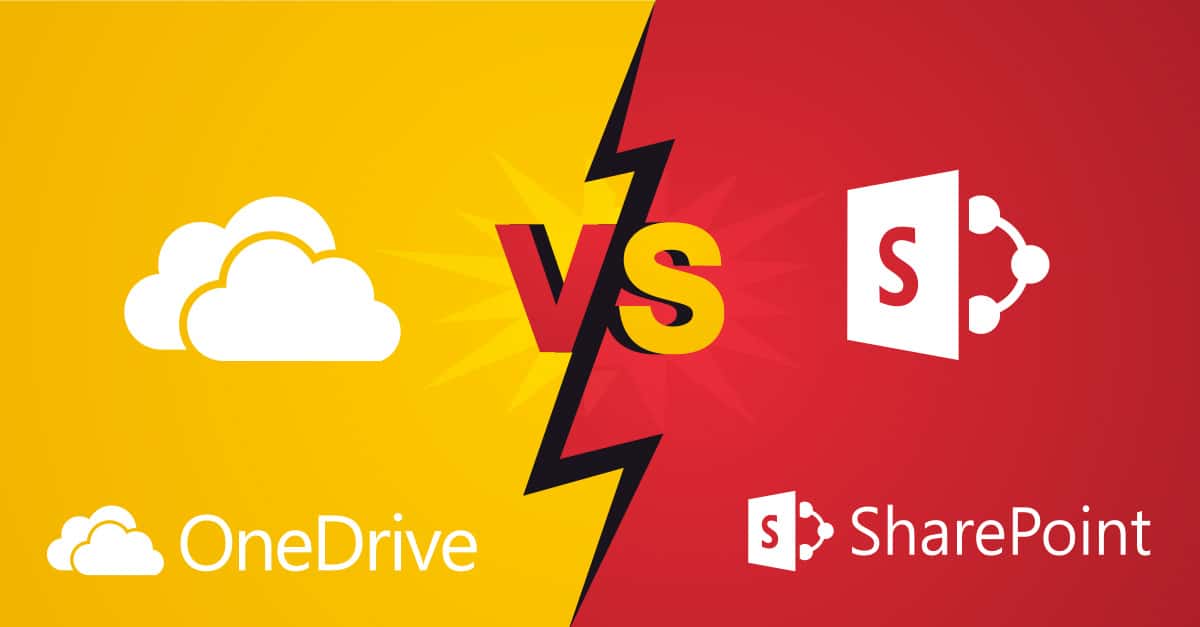When to use OneDrive for Business or SharePoint for Teams

OneDrive for Business and SharePoint for Teams are included with Office 365 for Business. In fact, they complement each other; it’s ideal for small- to medium-sized businesses to set up both for better document management and collaboration.
Both are Cloud-based services that allow you to store, share and sync files from a number of devices with access to the Internet. Since you synchronize these files, anyone sharing a file can see the most up-to-date information (including comments and notes) using real-time collaboration.
The easy way to remember which is which: OneDrive implies “one user,” and SharePoint Teams implies “sharing and collaboration.”
OneDrive for Business
Keep documents in OneDrive when you want to keep them private or control them before moving to a SharePoint team site.
OneDrive for Business is a place for you to:
- Keep your work files private (such as a draft or personal documents).
- Share selected files with other people for review or editing purposes. For instance, if you’re writing an article and would like some feedback, all you need is to provide a document link and editing permissions.
It’s tempting to save all your documents into OneDrive, but you need to think about a project or document’s requirements. If you need others to collaborate to finish a project or document, then saving it to a SharePoint team site may be a better choice.
SharePoint Team Site
A SharePoint team site allows you to collaborate on files, documents and ideas with a full range of features, including document libraries, task lists, calendars, and workflows. To put it plainly, SharePoint is two-way communication between team members.
A team site is a place for you to:
- Store documents that are relevant to an ongoing project that requires collaboration.
- Have greater ownership over projects and documents.
- Grant permissions on a site rather than just a single document. This allows people to have access to all the files and documents that they need to review or finish a project.
- Create a single destination, so team members know exactly where to find and save them.
- Create a check-in workflow and task list for team members.
OneDrive for Business versus SharePoint Team Site
This chart will help you decide which to choose:
Again, OneDrive is for the “me” side of your work library, and SharePoint Teams is the “we” collaboration side of work.




